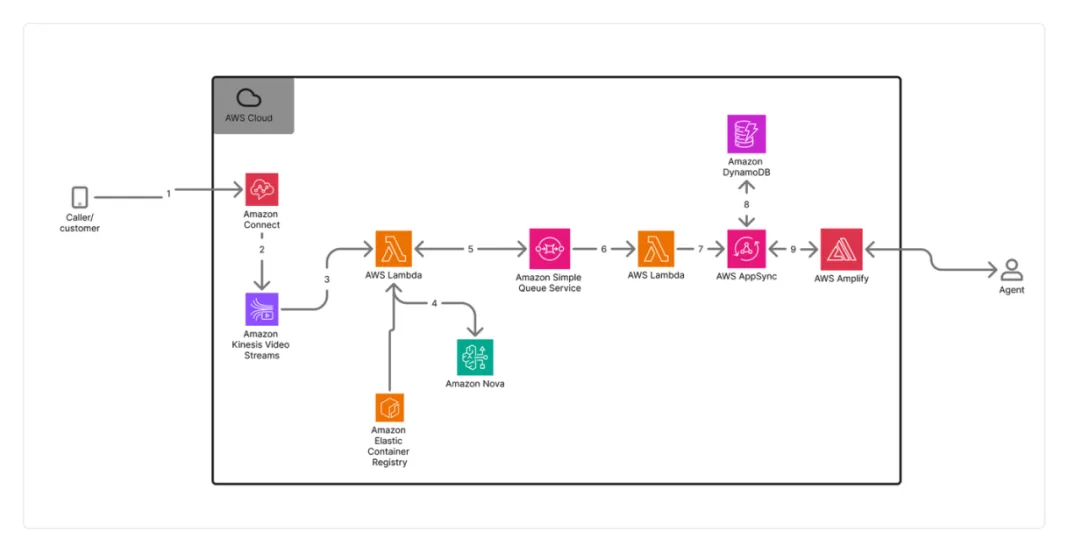In high-volume healthcare contact centers, every patient conversation carries both clinical and operational significance, making accurate real-time transcription necessary for automated workflows. Accurate, instant transcription enables intelligent automation without sacrificing clarity or care, so that teams can automate electronic medical record (EMR) record matching, streamline workflows, and eliminate manual data entry. By removing routine process steps, staff can stay fully focused on patient conversations, improving both the experience and the outcome. As healthcare systems seek to balance efficiency with empathy, real-time transcription has become a capability for delivering responsive, high-quality care at scale.
Switchboard, MD is a physician-led AI and data science company with a mission to prioritize the human connection in medicine. Its service improves patient engagement and outcomes, while reducing inefficiency and burnout. By designing and deploying clinically relevant solutions, Switchboard, MD helps providers and operators collaborate more effectively to deliver great experiences for both patients and staff. One of its key solutions is streamlining the contact center using AI voice automation, real-time medical record matching, and suggested next steps, which has led to significant reductions in queue times and call abandonment rates.
With more than 20,000 calls handled each month, Switchboard, MD supports healthcare providers in delivering timely, personalized communication at scale. Its AI platform is already helping reduce call queue times, improve patient engagement, and streamline contact center operations for clinics and health systems. Customers using Switchboard have seen outcomes such as:
- 75% reduction in queue times
- 59% reduction in call abandonment rate
Despite these early successes, Switchboard faced a critical challenge: their existing transcription approach couldn’t scale economically while maintaining the accuracy required for clinical workflows. Cost and word error rate (WER) weren’t just operational metrics—they were critical enablers for scaling automation and expanding Switchboard’s impact across more patient interactions.
In this post, we examine the specific challenges Switchboard, MD faced with scaling transcription accuracy and cost-effectiveness in clinical environments, their evaluation process for selecting the right transcription solution, and the technical architecture they implemented using Amazon Connect and Amazon Kinesis Video Streams. This post details the impressive results achieved and demonstrates how they were able to use this foundation to automate EMR matching and give healthcare staff more time to focus on patient care. Finally, we’ll look at the broader implications for healthcare AI automation and how other organizations can implement similar solutions using Amazon Bedrock.
Choosing an accurate, scalable, and cost-effective transcription model for contact center automation
Switchboard, MD needed a transcription solution that delivered high accuracy at a sustainable cost. In clinical settings, transcription accuracy is critical because errors can compromise EMR record matching, affect recommended treatment plans, and disrupt automated workflows. At the same time, scaling support for thousands of calls each week meant that inference costs couldn’t be ignored.
Switchboard initially explored multiple paths, including evaluating open source models such as Open AI’s Whisper model hosted locally. But these options presented tradeoffs—either in performance, cost, or integration complexity.
After testing, the team determined that Amazon Nova Sonic provided the right combination of transcription quality and efficiency needed to support their healthcare use case. The model performed reliably across live caller audio, even in noisy or variable conditions. It delivered:
- 80–90% lower transcription costs
- A word error rate of 4% on Switchboard’s proprietary evaluation dataset
- Low-latency output that aligned with their need for real-time processing

Equally important, Nova Sonic integrated smoothly into Switchboard’s existing architecture, minimizing engineering lift and accelerating deployment. With this foundation, the team reduced manual transcription steps and scaled accurate, real-time automation across thousands of patient interactions.
“Our vision is to restore the human connection in medicine by removing administrative barriers that get in the way of meaningful interaction. Nova Sonic gave us the speed and accuracy we needed to transcribe calls in real time—so our customers can focus on what truly matters: the patient conversation. By reducing our transcription costs by 80–90%, it’s also made real-time automation sustainable at scale.”
– Dr. Blake Anderson, Founder, CEO, and CTO, Switchboard, MD
Architecture and implementation
Switchboard’s architecture uses Amazon Connect to capture live audio from both patients and representatives. Switchboard processes audio streams through Amazon Kinesis Video Streams , which handles the real-time media conversion before routing the data to containerized AWS Lambda functions. Switchboard’s Lambda functions establish bidirectional streaming connections with Amazon Nova Sonic using BedrockRuntimeClient’s InvokeModelWithBidirectionalStream API. This novel architecture creates separate transcription streams for each conversation participant, which Switchboard recombines to create the complete transcription record. The entire processing pipeline runs in a serverless environment, providing scalable operation designed to handle thousands of concurrent calls while using Nova Sonic’s real-time speech-to-text capabilities for immediate transcription processing.
Nova Sonic integration: Real-time speech processing
Harnessing Amazon Nova Sonic’s advanced audio streaming and processing, Switchboard developed and built the capability of separating and recombining speakers’ streams and transcripts. This makes Amazon Nova Sonic particularly effective for Switchboard’s healthcare applications, where accurate transcription and speaker identification are crucial.
Amazon Nova Sonic offers configurable settings that can be optimized for different healthcare use cases, with the flexibility to prioritize either transcription or speech generation based on specific needs. A key cost-optimization feature is the ability to adjust speech output tokens – organizations can set lower token values when primarily focused on transcription, resulting in significant cost savings while maintaining high accuracy. This versatility and cost flexibility makes Amazon Nova Sonic a valuable tool for healthcare organizations like Switchboard looking to implement voice-enabled solutions.
Why serverless: Strategic advantages for healthcare innovation
Switchboard’s choice of a serverless architecture using Amazon Connect, Amazon Kinesis Video Streams, and containerized Lambda functions represents a strategic decision that maximizes operational efficiency while minimizing infrastructure overhead. The serverless approach eliminates the need to provision, manage, and monitor underlying infrastructure, so that Switchboard’s engineering team can focus on developing clinical automation features rather than server management. This architecture provides built-in fault tolerance and high availability for critical healthcare communications without requiring extensive configuration from Switchboard’s team.
Switchboard’s event-driven architecture, shown in the following figure, enables the system to scale from handling dozens to thousands of concurrent calls, with AWS automatically managing capacity provisioning behind the scenes. The pay-as-you-go billing model helps Switchboard pay only for compute resources used during call processing, optimizing costs while eliminating the risk of over-provisioning servers that would sit idle during low-volume periods.

Conclusion
Switchboard, MD’s implementation of Amazon Nova Sonic demonstrates how the right transcription technology can transform healthcare operations. By achieving 80–90% cost reductions while maintaining clinical-grade accuracy, they’ve created a sustainable foundation for scaling AI-powered patient interactions across the healthcare industry.
By building on Amazon Bedrock, Switchboard now has the flexibility to expand automation across more use cases and provider networks. Their success exemplifies how healthcare innovators can combine accuracy, speed, and efficiency to transform how care teams connect with patients—one conversation at a time.
Get started with Amazon Nova on the Amazon Bedrock console. Learn more about Amazon Nova models at the Amazon Nova product page.
About the authors
 Tanner Jones is a Technical Account Manager in AWS Enterprise Support, where he helps customers navigate and optimize their production applications on AWS. He specializes in helping customers develop applications that incorporate AI agents, with a particular focus on building safe multi-agent systems.
Tanner Jones is a Technical Account Manager in AWS Enterprise Support, where he helps customers navigate and optimize their production applications on AWS. He specializes in helping customers develop applications that incorporate AI agents, with a particular focus on building safe multi-agent systems.
 Anuj Jauhari is a Sr. Product Marketing Manager at AWS, where he helps customers innovate and drive business impact with generative AI solutions built on Amazon Nova models.
Anuj Jauhari is a Sr. Product Marketing Manager at AWS, where he helps customers innovate and drive business impact with generative AI solutions built on Amazon Nova models.
 Jonathan Woods is a Solutions Architect at AWS based in Nashville currently working with SMB customers. He has a passion for communicating AWS technology to businesses in a relevant way making it easy for customers to innovate. Outside of work, he tries keeping up with his three kids.
Jonathan Woods is a Solutions Architect at AWS based in Nashville currently working with SMB customers. He has a passion for communicating AWS technology to businesses in a relevant way making it easy for customers to innovate. Outside of work, he tries keeping up with his three kids.
 Nauman Zulfiqar is a senior account manager based in New York working with SMB clients. He loves building and maintaining strong customer relationships, understanding their business challenges and serving as the customer’s primary business advocate within AWS.
Nauman Zulfiqar is a senior account manager based in New York working with SMB clients. He loves building and maintaining strong customer relationships, understanding their business challenges and serving as the customer’s primary business advocate within AWS.






